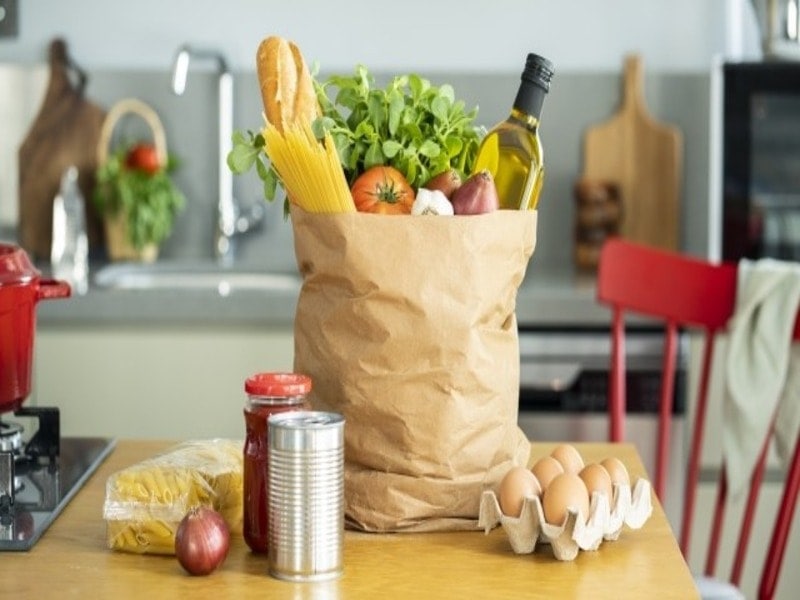Introduction
Paper grocery bags have recently seen a massive increase in use among many retailers and consumers. Such a shift towards brown paper bags has led to pushing people to make sustainable choices. Single-use plastic bags once overshadowed these bags, but now, due to their eco-friendliness and versatility, they have gained significant value. Brown paper bags are preferred in supermarkets and even local markets as a packaging choice. They contribute to both the environment and convenience.
Apart from being environmentally suitable, paper bags have various other practical benefits. They are breathable and durable, allowing them to store grocery items safely and minimize the risk of moisture and tearing. They are also reusable, which makes them highly biodegradable and caters well to the eco-conscious consumers.
The guide below captures a detailed insight into Kraft paper bags, how they are made, and the way they cater to various retailers. So, let’s read below to get a hold of all the important details.
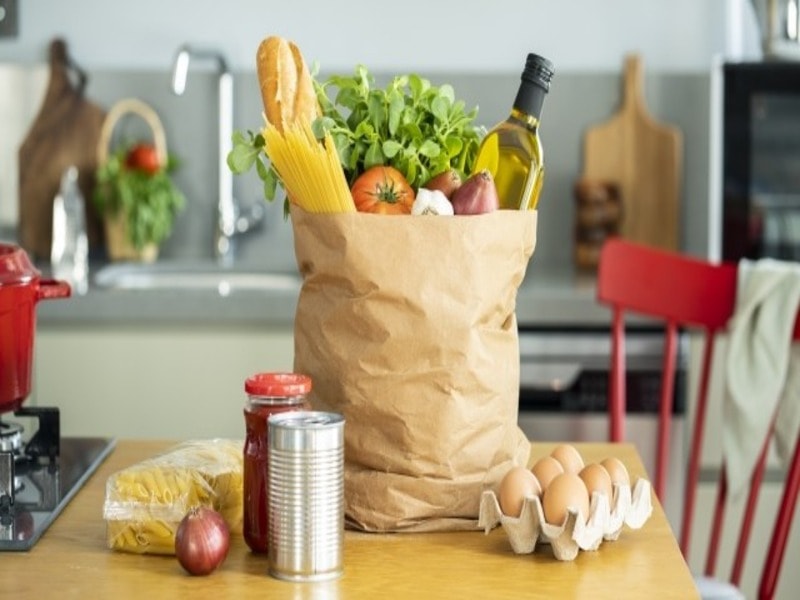
Paper Grocery Bags in Everyday Use
Paper grocery bags have now become an important part of everyday shopping. They are highly practical due to their durability and strength. The design they feature even meets the needs of consumers and, at the same time, offers sustainability. Whether you want to carry fresh produce or packaged items, these bags support green practices and offer convenience. Some of the reasons these bags are a great choice are as follows:
Strength and Durability
One of the major advantages of paper grocery bags is that they are strong and durable. They are made with good-quality kraft paper and can handle heavy items like canned foods, vegetables, fruits, and much more without tearing. The durability of the paper grocery bags plays a very important role, as the grocery items are heavy and need something stable enough to hold them. Some items are even equipped with moisture and need a tear-resistant packaging, which is served by kraft paper bags.
Most of these bags with handles ensure stability and ease of carrying, even when filled to their maximum capacity. They also have a double-layer, which adds more strength and makes them long-lasting. They offer the durability of plastic bags while also ensuring a reduction in environmental impact.
Standard Sizes
Paper grocery bags are also known for their standard sizes. These sizes are highly versatile and hence cater to many shopping needs. The small-sized bags are suitable for lighter items, and the medium ones can hold weekly grocery hauls. They have a rectangular shape and offer sufficient storage capacity to allow products to be arranged neatly. Hence, customers who prefer organized packaging find it to be a great choice.
You can also have these bags customized according to your own size requirements to cater to your unique packaging requirements for the products you manufacture.
Flat Bottom Layout
The flat bottom layout of the grocery bags makes them stand upright. Hence, the process of loading and unloading groceries is easier. The buyers can easily pack their items without the hassle of the bag tipping over.
Flat-bottom bags distribute the weight evenly, making the packaging process easier; they even protect delicate items like eggs and bread. Such bags enhance the overall efficiency while shopping, and the checkout process becomes a breeze.
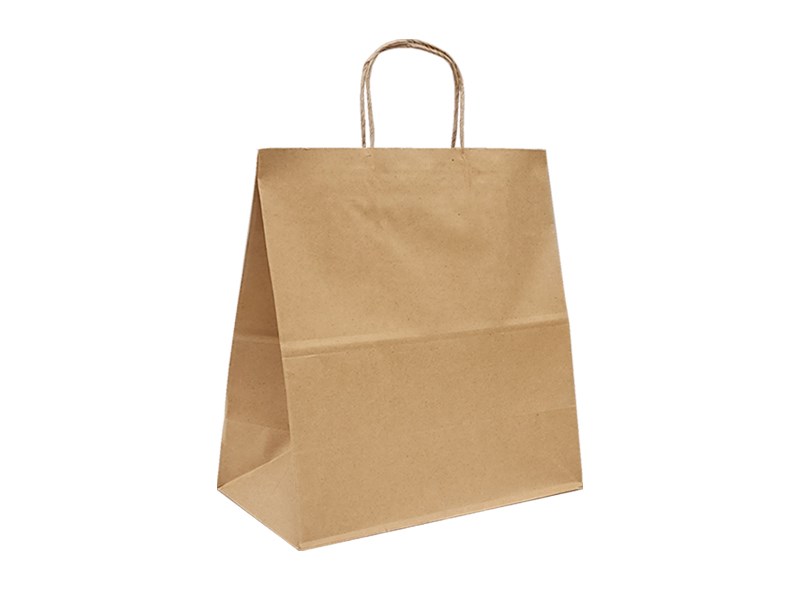
Why Consumers Prefer Brown Paper Bags
In today’s world, paper products have become a symbol of eco-consciousness. Hence, more and more people are inclined towards choosing them instead of plastic. These brown paper bags are perfect for ease of use and function, making them the right choice for both consumers and retailers.
Eco-Friendly and Sustainable
One of the major reasons behind the brown paper bags being preferred by most users is their eco-friendly nature. These bags are made from recycled materials or natural alternatives, composed of wood pulp, and do not release any harmful toxins. Plastic bags, on the other hand, take hundreds of years to decompose.
Moreover, these brown paper bags, due to being recyclable, also reduce the demand for raw materials. Hence, they create very sustainable production cycles where wastage is minimized and the planet is protected.
Reliable and Practical for Daily Use
Kraft paper bags are highly practical; they can withstand daily shopping due to the excellent strength they possess. They have a sturdy material that is ideal for carrying vegetables, fruits, and other heavy grocery items. They also have a better structure and shape, which makes stacking items easy.
Most of the kraft paper bags may also have handles, making them portable and convenient. They are different from thin plastic bags that break upon stretching, as the brown paper bags maintain their stability. Many people prefer opting for these bags for carrying their groceries, books, clothing, and even lunches.

Promotional and Brandable
These brown paper kraft bags serve as a great tool for branding purposes. Many retail stores, grocery stores, and cafes have their logos and business messages printed on the surface of the bag. Hence, they can be turned into a moving billboard for businesses.
They have a very fine natural brown background, which serves as a perfect canvas for all types of printing, giving a premium look. Many businesses even opt for such bags to emphasize their inclination towards commitment to sustainability, ensuring that they play a role in reducing plastic use.
Aesthetically Appealing and Natural
Brown Kraft possesses an aesthetically pleasing texture and a natural touch. It has a simple and authentic look, which boosts environmental awareness. Many users associate these brown paper bags with organic and natural products, emphasizing the concept of eco-friendliness. Their rustic look offers a modern yet minimal appeal, offering a finished canvas for printing business tags.
Paper vs. Plastic vs. Reusable Grocery Bags
An insight into the comparison between paper bags, plastic bags, and reusable bags is presented in the table below.
| Feature | Paper Bags | Plastic Bags | Reusable Bags |
| Eco-Friendliness | Highly eco-friendly | Not eco-friendly | Very eco-friendly |
| Durability | Offer a moderate durability | Highly durable | Extremely durable |
| Cost | Not very costly | Very cheap | High initial cost |
| Recycling | Highly recyclable | Limited | Reusable in the long term |
| Customer Perception | Positive | Negative | Strong eco-value |
Plastic Bags
Plastic bags are very affordable and lightweight, but they cost the environment a lot. These bags are made with petroleum-based materials, which take years and years to decompose. Hence, they contribute greatly to harming the environment as a whole by clogging waterways and also releasing toxins into the environment.
Due to their low cost of production, many retailers may find them appealing. However, they have a negative impact on the planet, leading to the emergence of bans across the globe.
Reusable Bags
Reusable bags are meant for long-term use, which helps reduce waste significantly. These bags are made with jute, cloth, or other durable materials. However, they are expensive and require a high upfront cost.
Most of the shoppers carry these bags to carry their purchases, and they offer maximum benefits to the environment. By ordering wholesale from suppliers for your business, you can achieve economies of scale, reducing your packaging costs.
Paper Bags
Paper bags lie between reusable bags and plastic ones. They are recyclable, biodegradable, and even eco-friendly. They are also very cost-effective and can hold groceries conveniently due to their strength. The best part about these bags is that they are natural-looking and clean, encouraging sustainability values.
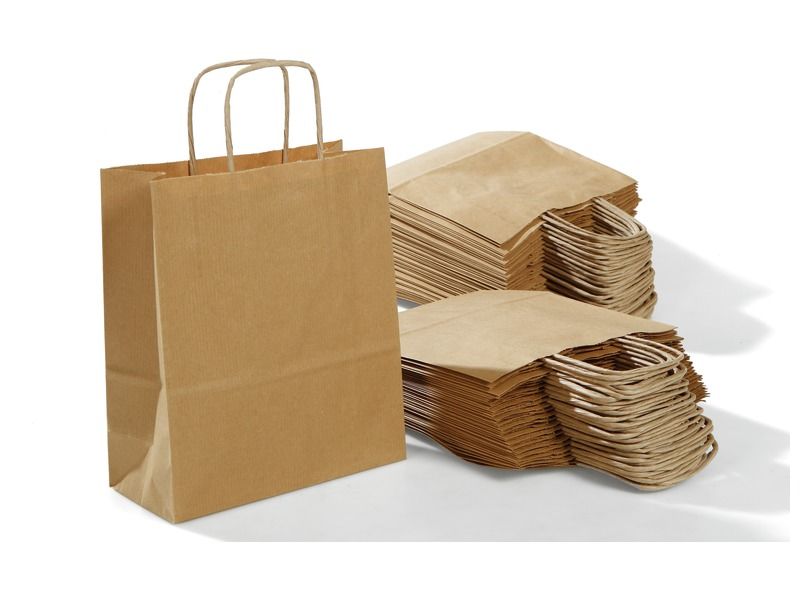
Where Do Paper Bags Come From?
Paper bags used for groceries appear simple, but they include essential aspects that make them sustainable. Hence, it is important to understand the origin of these bags so that the users are not just focused on their function but also on their sustainability. Some of these aspects are discussed below.
Material: Kraft Paper Made from Wood Pulp
The key material used to make paper bags is kraft paper, made from wood pulp. This paper is durable and is known for its resistance to tearing. It is produced from trees like spruce and pine that consist of long fibers, making the paper durable. Such trees are mostly found in forests that are maintained and have a replantation cycle continued for consistent production.
After the wood is harvested, it is converted into small chips and then subjected to mills where the fibers are separated. The kraft paper is a natural paper that is different from the bleached papers that use bleached pulps and hence maintains its natural brown color.
Lately, many manufacturers have converted recycled paper pulp into kraft paper by adding virgin fibers and recycled fibers to maintain the paper’s strength and eliminate the need for new production. It helps to reduce deforestation and meet sustainable practices.

Production: From Pulping to Bag Formation
The process by which the wood is converted into a fully finished paper bag comprises multiple stages that are carefully planned. It starts with the process of pulping, where wooden chips are converted into fibers with the help of chemicals, water, and heat. The process uses sodium hydroxide and sodium sulfide, which help bind the fibers together.
As soon as the pulp is formed, the process of screening and washing is conducted to remove impurities. The clean pulp is pressed and then dried to convert into thin sheets of kraft paper. These sheets are then rolled into larger reels, and then different sizes of paper bags are made out of them.
When making the kraft paper bag, the paper is cut, folded, and then shaped with glue according to the required designs. The flat bags are used mostly for lighter products, but the ones with the square button are meant for groceries as they offer added strength. Some Kraft paper bags may also have handles added to them to make them convenient. The vendors are always willing to design your kraft paper bags the way you desire when ordered in bulk.
Sustainability: A Focus on Recycling and Renewal
One of the major aspects of paper bag production is that it is inclined towards sustainability. Most manufacturers of paper bags source their wood from certified forests to ensure the raw material comes from managed forests. The waste of the pulping process is also reused, and green practices are ensured.
The paper industry is mostly continuing to increase the percentage of recycled content in paper bags, and the kraft paper is now made using 100% recycled fibers. It reduces energy consumption, water usage, and even greenhouse gas emissions when compared to new raw material sourcing.
Paper bags are highly positive for the environment, as even after using them, they are easily recycled and processed into new paper products. Hence, their lifecycle is enhanced, and waste is prevented from reaching landfills.
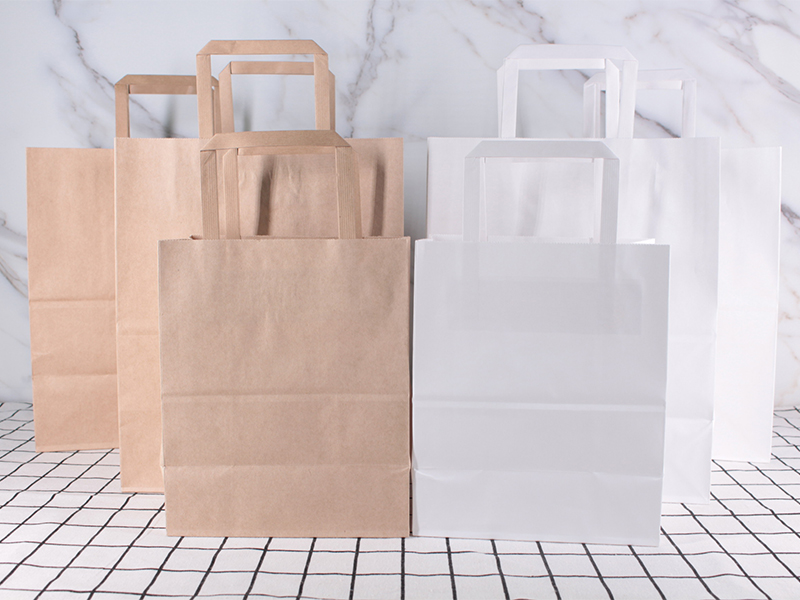
Grocery Stores and Paper Bag Adoption
In recent times, grocery stores have been adopting paper bags very commonly due to their commitment to environmental responsibility. It doesn’t only represent a packaging change, but rather it covers a broad transformation that covers environmental goals.
The Shift from Plastic to Paper
Many retail chains and supermarkets have not eliminated using plastic bags and are switching to paper products. The main reason is that plastic is causing severe environmental issues, and hence, governments across the globe are looking forward to banning plastic bags. Hence, businesses have to look forward to sustainable packaging solutions.
Paper bags are natural, recyclable, and biodegradable; they are also made from renewable resources, hence they are preferred by most stores.
Consumer Preferences and Perception
Apart from the regulations, consumer behavior has also played a crucial role in this transition. Customers are more inclined towards opting for items that care for the environment. Hence, paper bags give them a sense of sustainability and even enhance the brand image, matching the customer mindset.
Customers these days also prefer opting for businesses that support environmental friendliness. Hence, businesses that invest in paper bags can gain loyal customers due to their inclination towards eco-consciousness.
A Step Towards Global Sustainability Goals
The use of paper bags aligns with the global sustainability standards. By reducing plastic bags and opting for paper bags, grocery stores play a vital role in reducing carbon footprints, waste, and even promote renewable material usage.
The cost of production for paper bags is a little higher than that of plastic, but they also have long-term benefits. These bags help reduce environmental impact, customer goodwill, and allow businesses to comply with environmental laws.

Everything You Need to Know About Paper Grocery Bags
Are paper grocery bags recyclable?
Yes, paper grocery bags are recyclable, provided that you keep them clean and dry. Bags with grease, food stains, or plastic linings should not be placed in recycling bins; instead, they must be composted.
What are standard grocery bag sizes?
There are different sizes for grocery bags, but the most common one is 12x7x16 inches, which holds various grocery items like beverages, fruits, vegetables, and other boxed products.
Are paper bags better than reusable bags?
Paper bags, as well as reusable bags, offer environmental benefits. The reusable bags are durable and can reduce waste over time. However, the paper bags are recyclable, biodegradable, and even very convenient. Hence, for short-term use, the paper bags are more suitable.
Where do paper grocery bags come from?
Paper grocery bags are made using kraft paper. Kraft paper comes from either recycled paper fibers or wood pulp. The process of making these bags ensures that the durability of the bag is maintained and supports sustainability at the same time.
Why are paper grocery bags usually brown?
The natural brown color of the paper grocery bags ensures that they come from unbleached kraft paper. Hence, it offers them a natural and eco-friendly look and even reduces the use of chemical processing. It helps to keep the production cost low, making the bags more economical and sustainable.

Conclusion
Brown paper grocery bags are highly practical and offer a suitable choice these days. They are known for their versatility, strength, and environmental friendliness as a perfect alternative to plastic bags. They are known for their natural look and are also open to customization, which makes them suitable for branding. Many businesses can create a positive brand image using these bags in their retail stores.
Hence, by creating a balance between convenience and sustainability, the paper bags serve both retailers and customers as custom happy-makers. As the world is moving towards green practices and improved environmental standards, these bags offer betterment for the planet.
Switch to Brown Grocery Paper Bags for Your Store
So, are you looking to replace the single-use plastic bags by playing your part in environmental betterment? We at Tendee Accessory Shanghai Limited offer custom paper bags in bulk. These bags are designed with your inclination towards sustainability in mind and also feature your brand identity. So, get in touch with us today!

